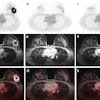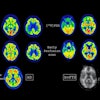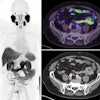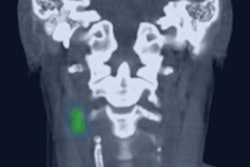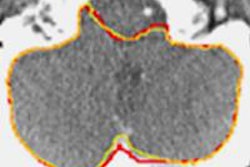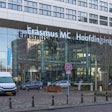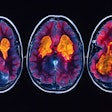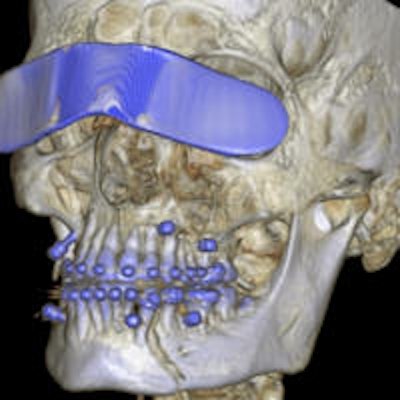
What's on the daily agenda of head and neck radiologists? What are the main issues and topics facing them? This interview with Dr. Florian Dammann, chair of the German Radiological Society's (DRG's) Head and Neck Diagnostics Working Group and professor and medical director at the Institute for Radiology and Nuclear Medicine at the Alb Fils Klinik am Eichert in Göppingen (Baden-Württemberg, Germany), provides some answers.
What are the main diseases dealt with by head and neck specialists?
 Dr. Florian Dammann is chair of the German Radiological Society's Head and Neck Diagnostics Working Group.
Dr. Florian Dammann is chair of the German Radiological Society's Head and Neck Diagnostics Working Group.The picture is dominated, on the one hand, by oncological disease patterns, such as squamous cell carcinoma, which is fairly common, affecting the oral cavity, hypopharynx and larynx, and tonsillar adenocarcinoma.
Inflammatory conditions constitute a second major group of disorders; here, we are dealing mainly with inflammation of the paranasal sinuses. In cases of chronic sinusitis, tomographic diagnostics, mainly in the form of CT, have now become a compulsory part of preoperative planning in preparation for endoscopic procedures.
The third principal area is trauma diagnostics, and here we are dealing mainly with cases of midfacial trauma. Also of importance are the salivary glands, temporomandibular joint, temporal bone, and palpable neck masses (hemangioma, lymphangioma, cleft cysts, thyreoglossal duct cyst, and lymph nodes).
Obviously, there is also a host of other topics, further details of which can be found on sites such as the home page of the German Association of Specialist Medical Scientific Societies, where the guidelines for our working group provide a good overview of the spectrum of the subjects that we cover.
Which methods are employed in head and neck imaging?
Basically, all imaging methods are used. However, conventional images are of only limited value in the area, with a correspondingly narrow spectrum of indications. The use of ultrasound scanning and nuclear medicine is also restricted to certain issues, though ultrasound does have advantages as a front-line tool and for follow-up. Nonetheless, head and neck fluoroscopy still has one of the most recent indications in radiology: investigations into functional impairment in cases of dysphagia.
It is CT and MRI that offer by far the broadest diagnostic spectrum in the head and neck region. Over the past few years, the toolkit has been expanded with the arrival on the scene of digital volume tomography (DVT) as a new tomographic procedure for diagnostics relating to dental and bone structures -- an exciting subject. In tumor patients, there is also the useful option of new hybrid procedures, such as PET/CT, in the head and neck region. With no regular funding from statutory sickness insurers, use of these procedures tends to be restricted to special cases.
If anyone would like to know more about the various imaging methods, I would recommend that they take a look at the paper titled "Bildgebende Verfahren in der Kopf-Hals-Diagnostik" [Head and Neck Diagnostic Imaging Procedures] published in the Deutscher ärzteblatt.
What's on the agenda for head and neck radiologists?
The main focus is on carrying out investigations and drafting relevant reports. In addition, it is important that they maintain dialogue with patients and the various departments that treat them, in the form of activities such as joint clinical conferences.
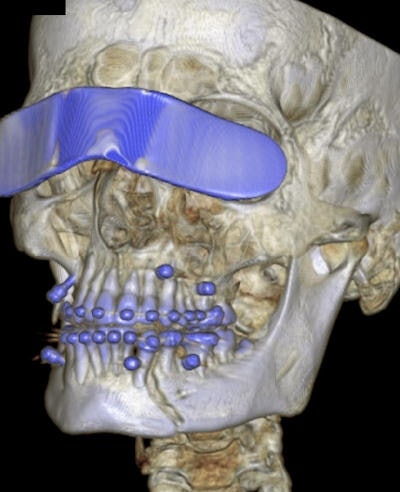 The 3D CT reconstruction shows a mandibular fracture, which was fixed surgically by wiring. To protect the eyes from x-rays, a Bismuth protector was placed in front of the eyes. Image courtesy of Dr. Florian Dammann.
The 3D CT reconstruction shows a mandibular fracture, which was fixed surgically by wiring. To protect the eyes from x-rays, a Bismuth protector was placed in front of the eyes. Image courtesy of Dr. Florian Dammann.Another feature on the head and neck radiologist's agenda will, of course, be kindling interest in the subject amongst the next generation of radiologists; most young radiologists tend to steer well clear of the subject because the anatomy looks rather complex. This involves acquiring sound knowledge of the subject by means of a step-by-step learning process, because the majority of diagnostic issues can be resolved with just a few checkpoints that crop up time and time again.
It isn't all that complicated. As in any other area, the rest is down to experience, and it's also crucial to bear in mind a patient's medical history, previous examinations, and any surgery.
What is it about head and neck imaging that excites you, personally?
We were talking earlier about an "agenda" and that is exactly what I find exciting, but, on top of that, diagnostic issues arise now and again that call for a degree of experience in this specialty. It feels good when you've got that sort of experience behind you to help in dealing with such tricky cases. There aren't many specialists in this area.
However, what I find particularly exciting is that, as head and neck radiologists, we are working in a highly multidisciplinary area of the body. Close anatomical relationships call for close cooperation with other areas, such as neuroradiology, as a "sister discipline." Obviously, our main partners in terms of clinical disciplines are ear, nose, and throat, maxillofacial surgery, dentistry, radio-oncology, neurosurgery, and neurology, to name the most important ones. But we also work very closely with specialist nonmedical areas, such as speech therapy.
Where does head and neck radiology fit in as a subspecialty within radiology?
The public at large tends to perceive head and neck radiology as definitely being a "minor" specialty that does not rank on an equal footing with areas such as cardiac diagnostics, musculoskeletal diagnostics, or interventional radiology. Furthermore, people tend to be happy to regard it, from a safe distance, as straddling the "border" between radiology and neuroradiology, with difficult anatomy.
On the other hand, the large number of clinical disciplines involved means that the number of patients brought together in need of a qualified head and neck radiologist is greater than is generally acknowledged. To give just one example, sinusitis, regarded initially as one of the key areas in head and neck radiology, is a disorder of enormous socioeconomic significance. In my view, the introduction of DVT, hitherto promoted by people who are not radiologists, has also yet to be appreciated fully in radiology.
What is the objective of the DRG's Head and Neck Diagnostics Working Group?
Firstly, our main objective is continuing education and training -- not only for colleagues who want to specialize in head and neck diagnostics, but also for young colleagues receiving continuing education and for those who have opted for other specialist areas in radiology.
Secondly, we are actively involved in the development of internal and -- even better -- interdisciplinary guidelines. Of course, there are also scientific projects in the area of head and neck diagnostics. Some of the most important subjects with which we are dealing here at the moment are: radiation protection, in other words, cutting down the dose administered during CT diagnostics; evaluation of DVT as a recent imaging method; and, in MRI scanning, testing of new sequences, such as diffusion imaging and perfusion studies for use in differentiating between benign and malignant disorders.
Who is eligible to join the Head and Neck Diagnostics Working Group?
Any member of the DRG can also get involved in the group. No supplement is payable for WG membership and you do not have to be a proven expert or to bring substantial experience in the area with you. In contrast, the most important objective for the WG is, as was said earlier, continuing training and education. This means that WG membership can be helpful, even for young medical staff in Assistenzarzt (junior doctor) posts.
What would people get out of membership of the Working Group?
WG members all know each other really well and keep in close contact with one another. The low membership count means that new members integrate quickly and become part of the "family." Through active support, they can enjoy the benefit of personal contacts, whether they are "newbies" benefiting from "accessible" assistance in difficult cases, or people interested in the science who are seeking ideas for up-to-date research topics, doctoral placements, and, for example, partnerships in multicenter studies. Higher-ranking people are more than welcome to join the consultants' circle and, with their experience, they can get involved in the development of guidelines and investigation protocols for CT, MRI, or other imaging methods.
Head and Neck Diagnostics Working Group online: www.ag-kopf-hals.drg.de.
Editor's note: This is an edited version of a translation of an article published online in German by the German Radiological Society (DRG). The original source was www.hellste-koepfe.de.Translation by Syntacta Translation & Interpreting.

